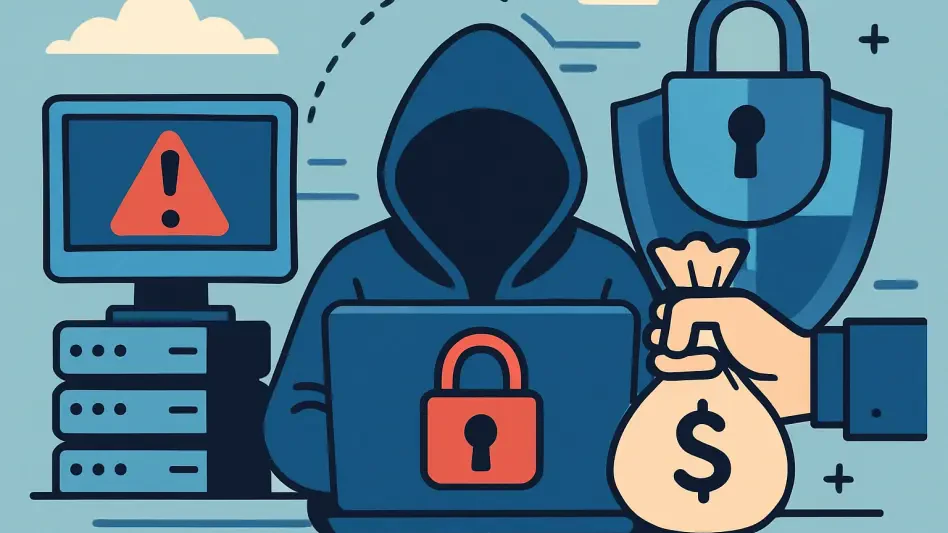Imagine a shadowy group infiltrating the digital backbone of over 80 countries, silently monitoring communications of governments, telecommunications giants, and even high-profile political figures. This is the reality of Salt Typhoon, a Chinese government-backed cyber espionage group that has emerged as a significant threat to global critical infrastructure. The scale of their operations, affecting hundreds of organizations, underscores the vulnerability of essential systems in an increasingly connected world.
The purpose of this FAQ is to demystify the complexities surrounding this advanced persistent threat (APT) group by addressing key questions about their tactics, targets, and the international response to their activities. Readers will gain a clear understanding of why Salt Typhoon poses such a grave risk and what steps can be taken to mitigate their impact.
This guide explores the group’s operational methods, the sectors most at risk, and the collaborative efforts by multiple nations to counter this challenge. By the end, a comprehensive picture will emerge of how this state-sponsored entity operates and what protective measures are essential for safeguarding vital networks.
Key Questions or Topics
What Is Salt Typhoon and Why Is It a Concern?
Salt Typhoon, also known by aliases such as OPERATOR PANDA and RedMike, is a cyber espionage group supported by the Chinese government, including entities like the People’s Liberation Army and the Ministry of State Security. Active for several years, this group operates under the cover of China-based companies, targeting critical infrastructure globally to gather intelligence on strategic communications and movements.
The concern stems from their ability to infiltrate key sectors such as telecommunications, government, and military networks, often remaining undetected for extended periods. Their espionage activities, which include monitoring senior political figures and presidential candidates in the United States, highlight a direct threat to national security and global stability.
Reports indicate that Salt Typhoon has impacted over 600 companies across numerous countries, showcasing their extensive reach. This widespread activity, combined with state backing, positions them as a formidable adversary, capable of disrupting essential systems while evading traditional detection methods, as noted by cybersecurity experts who describe their capabilities as highly advanced.
How Does Salt Typhoon Conduct Its Cyber Attacks?
The operational tactics of Salt Typhoon focus on exploiting publicly disclosed vulnerabilities in network devices rather than relying on undisclosed or zero-day exploits. Commonly targeted vulnerabilities include flaws in products from vendors like Ivanti, Palo Alto Networks, Cisco, Fortinet, and Microsoft Exchange, using these as entry points to breach systems.
Once inside, the group employs sophisticated techniques for persistence and data theft, such as altering access control lists, opening unauthorized ports, and capturing authentication traffic. Their ability to manipulate network features and operate within virtualized containers allows them to maintain long-term access, as evidenced by their nearly year-long presence in a U.S. Army National Guard unit’s network.
This methodical approach to lateral movement and exfiltration ensures that their activities often go unnoticed, posing a significant challenge to cybersecurity defenses. The reliance on known vulnerabilities also suggests that many attacks could be prevented with timely updates and patches, a critical gap in many organizations’ security protocols.
Which Sectors and Regions Are Most at Risk from Salt Typhoon?
Salt Typhoon primarily targets sectors vital to national and international security, with telecommunications and government entities at the forefront of their focus. Their interest in these areas allows for the monitoring of sensitive communications and strategic movements, providing valuable intelligence to their state sponsors.
Geographically, their operations span over 80 countries, demonstrating a global footprint that leaves few regions untouched. High-profile incidents, such as espionage on U.S. political figures and breaches into major telecom firms, illustrate the breadth of their ambitions and the critical nature of their targets.
The hospitality, transportation, and military sectors also fall within their scope, reflecting a strategy to disrupt or gather data from interconnected systems that underpin modern economies. This wide-ranging impact necessitates heightened vigilance from organizations operating in these fields, especially those handling sensitive or strategic information.
What Is the International Response to Salt Typhoon’s Activities?
A coalition of 13 nations, including the United States, Australia, Canada, and the United Kingdom, has issued a joint advisory to address the threat posed by Salt Typhoon. This collaborative effort, involving agencies like the U.S. National Security Agency and Cybersecurity and Infrastructure Security Agency, emphasizes the need for unified defense strategies to protect critical infrastructure.
The advisory provides detailed guidance on threat hunting, detection, and mitigation, urging organizations to monitor network logs for unusual activity and audit device configurations regularly. This international consensus highlights a shift toward shared intelligence and standardized practices as essential tools in countering state-sponsored cyber threats.
Beyond general recommendations, specific advice for frequently targeted systems, such as Cisco devices, includes disabling unused features and strengthening cryptographic protections. This actionable framework aims to empower entities to respond effectively, ensuring that the scope of any intrusion is thoroughly assessed before attempting to remove the threat.
What Can Organizations Do to Protect Against Salt Typhoon?
Protecting against Salt Typhoon requires a proactive approach centered on basic cybersecurity hygiene, given their reliance on exploiting known vulnerabilities. Timely patching of software and firmware, particularly for network devices, serves as a fundamental defense to block their initial access points.
Additionally, organizations should enhance monitoring capabilities to detect anomalies in network traffic and configurations, which could indicate unauthorized access or manipulation. Hardening device management protocols and restricting unnecessary features can further reduce the attack surface that Salt Typhoon exploits.
For a comprehensive response, a careful strategy is advised when an intrusion is detected, avoiding premature actions that might alert attackers. Conducting a thorough investigation to understand the full extent of the breach ensures that all traces of the threat are eliminated, preventing re-entry or further compromise.
Summary or Recap
Salt Typhoon stands as a prominent example of state-sponsored cyber espionage, with operations targeting critical infrastructure across the globe through sophisticated exploitation of known vulnerabilities. Their focus on telecommunications, government, and military sectors reveals a strategic intent to gather intelligence that could undermine national security and economic stability.
Key takeaways include the importance of timely patching, robust monitoring, and adherence to best practices in network security to counter their tactics. The international collaboration among 13 nations underscores the urgency of addressing this threat collectively, offering practical guidance for organizations to strengthen their defenses.
For those seeking deeper insights, exploring resources from cybersecurity agencies like the U.S. Cybersecurity and Infrastructure Security Agency or international advisories can provide additional technical details and updated threat intelligence. Such materials offer valuable context on evolving mitigation strategies and emerging risks in the cybersecurity landscape.
Conclusion or Final Thoughts
Reflecting on the extensive reach and stealth of Salt Typhoon, it becomes evident that the challenge of state-sponsored cyber threats demands a unified and proactive stance from both public and private sectors. The joint efforts of multiple nations in crafting detailed advisories mark a significant step in raising awareness and equipping organizations with tools to combat such sophisticated adversaries.
Looking ahead, entities are encouraged to prioritize the integration of advanced threat detection systems and foster partnerships with cybersecurity experts to stay ahead of evolving tactics. Building a culture of resilience through regular training and updated security policies emerges as a vital component in safeguarding critical systems.
As a final consideration, each organization needs to assess its specific vulnerabilities in light of Salt Typhoon’s known methods, tailoring defenses to address unique risks. Taking deliberate steps to fortify digital infrastructure not only protects individual entities but also contributes to the broader effort of securing global networks against persistent and state-backed cyber espionage.








